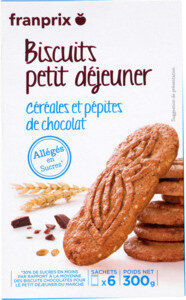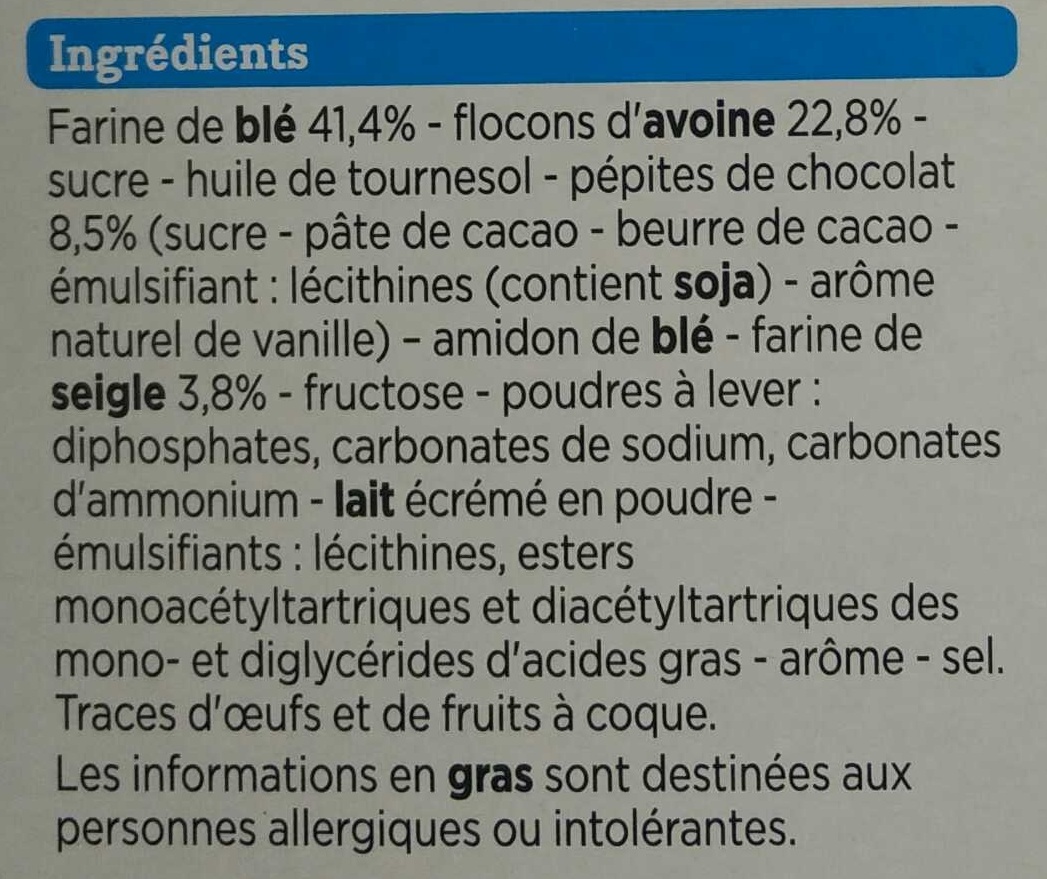biscuits petit dejeuner allégés en sucre - Franprix - 300 g (6 x 50 g)
This product page is not complete. You can help to complete it by editing it and adding more data from the photos we have, or by taking more photos using the app for Android or iPhone/iPad. Thank you!
×
Barcode: 3263850576713 (EAN / EAN-13)
Common name: Biscuits aux céréales (68 %) et aux pépites de chocolat, allégés en sucres
Quantity: 300 g (6 x 50 g)
Brands: Franprix
Categories: Snacks, Breakfasts, Sweet snacks, Biscuits and cakes, Biscuits, Chocolate biscuits, fr:Biscuits aux céréales
Labels, certifications, awards: Low or no sugar, Low sugar, Reduced sugar
Traceability code: EMB 29020H - Briec (Finistère, France), EMB 29058A - Fouesnant (Finistère, France), EMB 45315 - Sully-sur-Loire (Loiret, France)
Stores: Franprix
Countries where sold: France
Matching with your preferences
Environment
Carbon footprint
Packaging
Transportation
Report a problem
Data sources
Product added on by tacinte
Last edit of product page on by packbot.
Product page also edited by desan, kiliweb, sebleouf, teolemon, yuka.sY2b0xO6T85zoF3NwEKvlkdZT_PQiC7lDSHkhG7S6v6hCczQSuh165n3bKo.










